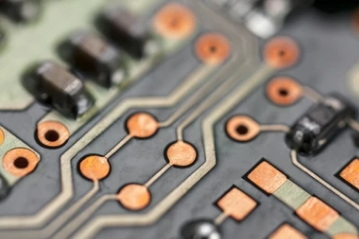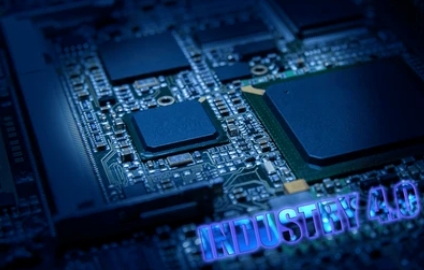Content Menu
● Introduction
● The Process of Surface Mount Assembly
>> Solder Paste Printing
>> Component Placement
>> Reflow Soldering
● Advantages of Surface Mount Assembly
● Challenges in Surface Mount Assembly
● Applications of Surface Mount Assembly
● Conclusion
● FAQ
>> 1. What is the difference between Surface Mount Assembly and Through-Hole Technology?
>> 2. Why is Surface Mount Assembly preferred in modern electronics?
>> 3. What are the main steps in the Surface Mount Assembly process?
>> 4. What are the common challenges in Surface Mount Assembly?
>> 5. How does Surface Mount Assembly impact device design?
Introduction
Surface Mount Assembly (SMA) is a pivotal technique in the realm of electronics manufacturing, revolutionizing how electronic components are attached to printed circuit boards (PCBs). Unlike traditional methods that involve inserting components through holes in the board, SMA allows for components to be mounted directly onto the surface of the PCB. This innovation has become essential in modern electronics due to its efficiency, compactness, and cost-effectiveness, enabling the production of smaller and more complex devices.

The Process of Surface Mount Assembly
Solder Paste Printing
The initial phase of the SMA process is solder paste printing. This involves applying solder paste—a mixture of metal solder and flux—onto specific locations on the PCB where components will be placed. A stencil is typically used to ensure precision in applying the paste, which serves both as an adhesive and a conductor. The quality of this application is crucial; improper amounts can lead to weak connections or solder defects during later stages.
Component Placement
Following solder paste application, components are placed onto the PCB using automated pick-and-place machines. These machines are capable of high-speed operation, placing thousands of components per hour with remarkable accuracy. The automation not only speeds up production but also minimizes human error, which is critical for maintaining quality in high-volume manufacturing.
Reflow Soldering
The final step in the surface mount assembly process is reflow soldering. After component placement, the PCB is passed through a reflow oven where it undergoes a controlled heating process. The heat melts the solder paste, creating a strong bond between the components and the PCB pads. This stage is carefully monitored to ensure that temperatures are optimal; too high can damage components, while too low may result in insufficient solder joints.
Advantages of Surface Mount Assembly
- Compact Design: SMA facilitates smaller and lighter PCBs, making it ideal for compact devices like smartphones and wearable technology.
- Cost Efficiency: The automation inherent in SMA reduces labor costs and increases production speed, leading to lower overall manufacturing costs.
- Enhanced Performance: Components mounted using SMA have shorter leads, which can improve electrical performance by reducing inductance and resistance.
- Flexibility in Design: The ability to place components on both sides of the PCB allows for more complex designs and higher component density.

Challenges in Surface Mount Assembly
- Component Limitations: Not all electronic components can be effectively mounted using surface mount techniques. Larger or heavier components may still require traditional through-hole methods.
- Equipment Costs: Initial investments for SMA equipment such as pick-and-place machines and reflow ovens can be significant, potentially posing a barrier for smaller manufacturers.
- Inspection Difficulties: Due to the small size of many surface mount devices (SMDs), inspecting solder joints can be challenging, requiring specialized equipment and techniques.
Applications of Surface Mount Assembly
- Consumer Electronics: Devices such as smartphones, tablets, and laptops heavily utilize SMA due to their compact nature and high component density requirements.
- Medical Devices: In medical technology, reliability and compactness are crucial; thus, SMA plays a vital role in manufacturing devices like pacemakers and diagnostic equipment.
- Automotive Industry: With advancements in automotive technology, SMA is increasingly used in electronic control units (ECUs) for safety systems and infotainment features.
Conclusion
Surface Mount Assembly has fundamentally transformed electronics manufacturing by enabling more compact designs, reducing costs, and enhancing production efficiency. As technology continues to evolve, SMA will likely become even more integral to developing advanced electronic devices. The ongoing trend towards miniaturization and increased functionality will further solidify its importance in future innovations.

FAQ
1. What is the difference between Surface Mount Assembly and Through-Hole Technology?
Surface Mount Assembly involves mounting components directly onto the PCB surface without drilling holes, while Through-Hole Technology requires inserting component leads through holes drilled into the board.
2. Why is Surface Mount Assembly preferred in modern electronics?
SMA is favored for its ability to create smaller devices with higher component densities, lower manufacturing costs due to automation, and enhanced performance characteristics.
3. What are the main steps in the Surface Mount Assembly process?
The primary steps include solder paste printing, component placement using automated machines, and reflow soldering to secure connections between components and the PCB.
4. What are the common challenges in Surface Mount Assembly?
Challenges include limitations on component types suitable for surface mounting, high initial equipment costs, and difficulties associated with inspecting small solder joints.
5. How does Surface Mount Assembly impact device design?
SMA allows for greater design flexibility by enabling more compact layouts with higher component density, facilitating innovative designs that were previously impossible with traditional methods.




















